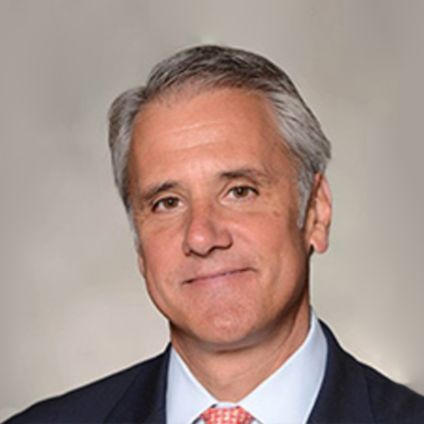The rapid development and adoption of an entirely new asset class was never going to be smooth. In the early days of crypto assets, the risks were all about the newly developed technology, immense price volatility and uncertain government policy. As the investment world started to embrace crypto as an emerging investable asset class, the risks became more systemic and governance focused.
The past year was certainly tumultuous on that front. The collapse of the Terra Luna ecosystem and the UST stablecoin in May 20221 reminded investors about the importance of assessing the underlying collateral quality and liquidity. The FTX debacle taught investors about the value of robust due diligence and governance. The downstream implications of these – and other governance oversights – brought intense scrutiny to the crypto asset trading ecosystem.
Emerging stronger
As has been the case in past financial crises, lessons are being learned and practices are improving. On the asset side, governance is being enhanced and strengthened. Investors are conducting more robust due diligence and monitoring. Regulators are exploring what guidance they can provide to help reduce the governance risk. Everyone – investment teams in particular – are taking much longer to scrutinize assets and investment opportunities.
The ‘crypto winter’ also helped stakeholders better understand the roles and responsibilities of the different players in the crypto ecosystem. Unlike the traditional financial system where functions like processing, settlement and custody are very well defined and segregated, crypto ecosystem players may fulfil multiple roles through vertical integration of responsibilities. Greater familiarity with the risks and counterparties has allowed investment managers to create better diligence frameworks and controls, thereby enabling them to take a more informed approach to investing in crypto assets
Testing the waters
While a healthy dose of skepticism remains, KPMG professionals’ conversations with asset managers across segments suggest that many recognize the important role crypto will play in helping them achieve their long-term investment objectives. And that is driving more asset managers to dip their toes into the crypto waters.
At the very basic end of the spectrum, asset managers are using centralized exchanges to place buy and sell orders much like they would on a traditional equities exchange. This approach has enabled investment exposure to crypto assets while limiting the need to build specialist technical knowledge. Players are also gravitating towards the services side of the equation, creating crypto-based ETF products and offering crypto prime brokerage solutions. Many venture capital has funds have been busy investing into companies on the leading edge of Web3 ecosystem development.
Adoption appears to be on the rise. More recently, mainstream financial institutions are starting to relax their cautious approach to crypto markets, with some major banks and investment firms launching or exploring their own crypto asset products and services. Moreover, the use cases for many of the underlying technologies (particularly digital ledger technology) are expanding beyond just financial transactions, with applications in areas such as real-world asset (RWA) tokenization, digital identity, collectables, supply chain management, and decentralized social media. With the potential for innovation and growth in the crypto space expanding, more investors and entrepreneurs are flocking into the field.
Betting on crypto
There are three main reasons that asset managers are keen on crypto. The most common is to build capabilities and experience. Whether or not you believe crypto is the future, the reality is that it is a growing and increasingly investable asset class that is clearly here to stay. They recognize that crypto models are increasingly being used to tokenize traditional assets to enhance liquidity and improve operational efficiencies. The sooner investment managers start working in the space and understanding the nuances, the sooner they will be able to spot and take advantage of new and emerging opportunities.
The second reason is to capture early advantages in the emerging Web3 landscape. Venture capital players, in particular, are hunting around to find the solutions and technologies that will unlock the next iteration of the internet. They are looking at crypto assets, marketplacess and their underlying technology infrastructure. Others are looking to simply establish their credentials in the burgeoning new marketplace.
The last (but certainly not least) reason is for returns. There are examples of investors achieving staggering returns through savvy investments in crypto assets. The risks are likely higher than other traditional asset classes, albeit with heightened risk and price volatility. Typically, these investors have a time horizon of an investment cycle, which includes a period of low activity and adoption that precedes periods of intense speculation and mania.
Time for orientation
Regardless of your reasoning, your approach or your ambition in this market, KPMG professionals’ advice to all asset managers is to get educated. Crypto is still relatively new, very fast moving and evolves at innovation speed. It is complicated, with many new players, roles, products and opportunities. And the regulatory environment (where one exists) is largely inconsistent globally. Investors need to be aware of the many nuances associated with crypto assets before they step into this market.
They also need to know why they are doing it. They need a coherent strategy that supports the organizational strategy and the investment strategy. They need to be clear about where they intend to play and what rules and guidelines they are setting for their investment teams. They need to be sure they have robust governance processes and controls before moving forward.
Here’s where the focus should be:
KPMG professionals’ experience helping asset managers develop and execute their crypto asset strategies suggests there are four key areas where asset managers and investors should want to focus:
Seeing past the volatility
As one might expect with the introduction of any new asset class, crypto has had its share of trip ups and stumbles. Some might argue that these are normal events in the maturation journey; their long-term impact may have been to make the markets more resilient, more transparent and more regulated.
Indeed, those able to look past the recent volatility to see crypto as an asset class may also see a long-term source of value. And many asset managers seem keen to increase their exposure to that.
Connect with us
Connect with us
- Find office locations kpmg.findOfficeLocations
- kpmg.emailUs
- Social media @ KPMG kpmg.socialMedia
1 The Alternative Investment Management Association Limited (AIMA) (2023, May). Digital Asset Trading An AIMA Industry Guide. In https://www.aima.org/compass/practical-guides/digital-assets/digital-asset-trading.html.









